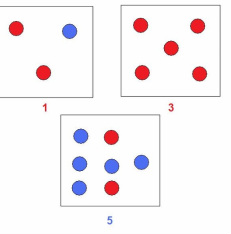The Three Branches of Government
Did you know that you do not actually vote for the President?
The Electoral College
- When you cast your vote at the polls, you have voted for an elector, not the President.
- elector- democrat or republican member of the Electoral College
- Each state has as many electors as they do senators
- To win Presidency, a majority of 270/538 electoral votes must be obtained
A helpful example...
The Electoral College can be a tricky concept to explain because many people believe that the popular vote determines the fate of the election, however this is not true! In this example, the electoral college is explained using a student vote for their class color. Mrs. Smith splits her class up into three groups. One of the groups has three students, the second has five students and the third group has seven students. Mrs. Smith then tells her class that the three-person group will recieve one electoral vote; the five-person group recieves three electoral votes and the seven-person group recieves five votes. After every student wrote their favorite color, red or blue, on a sheet of paper, Mrs. Smith came around and tallied the results.
Let's visualize!

*Group one had a majority vote for the color red, and recieved their one electoral vote for the color red.
*Group two also had a majority vote for the color red, and recieved 3 electoral votes for red.
Group three had a majority vote for the color blue, and recieved 5 electoral votes for blue.
*If this election was determined on popular vote, the color red would have been chosen for Mrs. Smiths class color. However, this vote was determined by electoral votes. The color red recieved four total electoral votes, but blue recieved five. Mrs. Smiths class color is BLUE!
*In the world of politics, the blue color would represent the Democratic party and the color red would determine the Republican party.
*Group two also had a majority vote for the color red, and recieved 3 electoral votes for red.
Group three had a majority vote for the color blue, and recieved 5 electoral votes for blue.
*If this election was determined on popular vote, the color red would have been chosen for Mrs. Smiths class color. However, this vote was determined by electoral votes. The color red recieved four total electoral votes, but blue recieved five. Mrs. Smiths class color is BLUE!
*In the world of politics, the blue color would represent the Democratic party and the color red would determine the Republican party.
